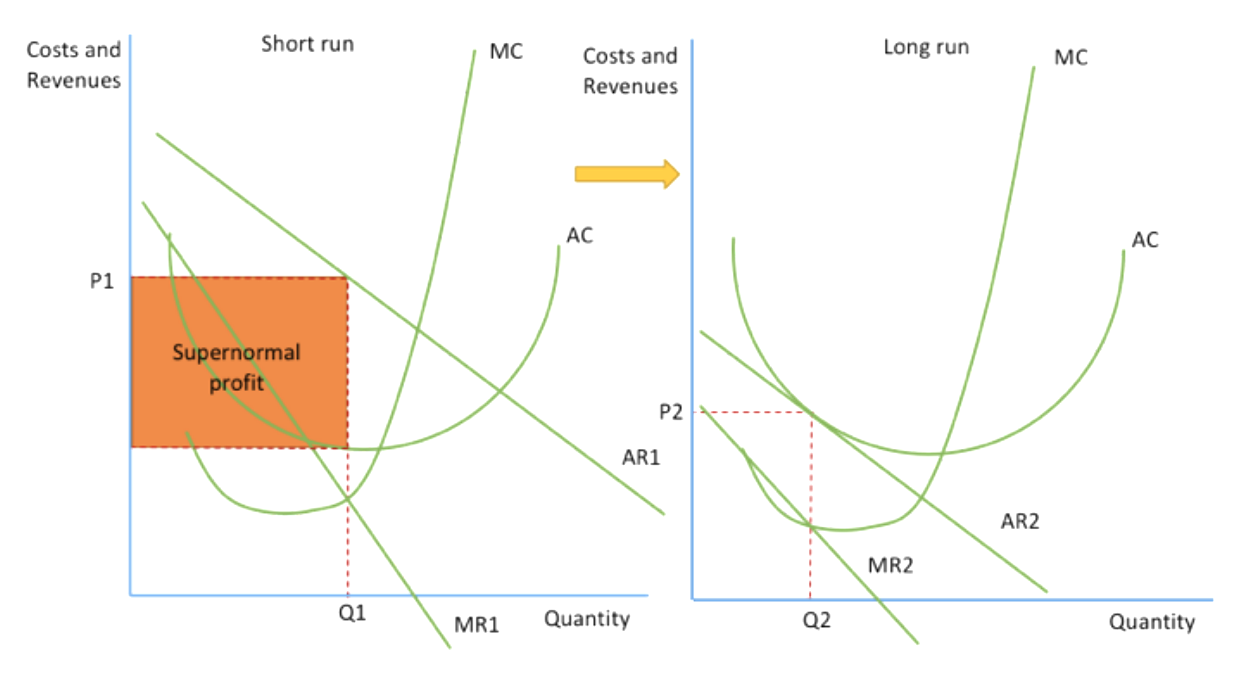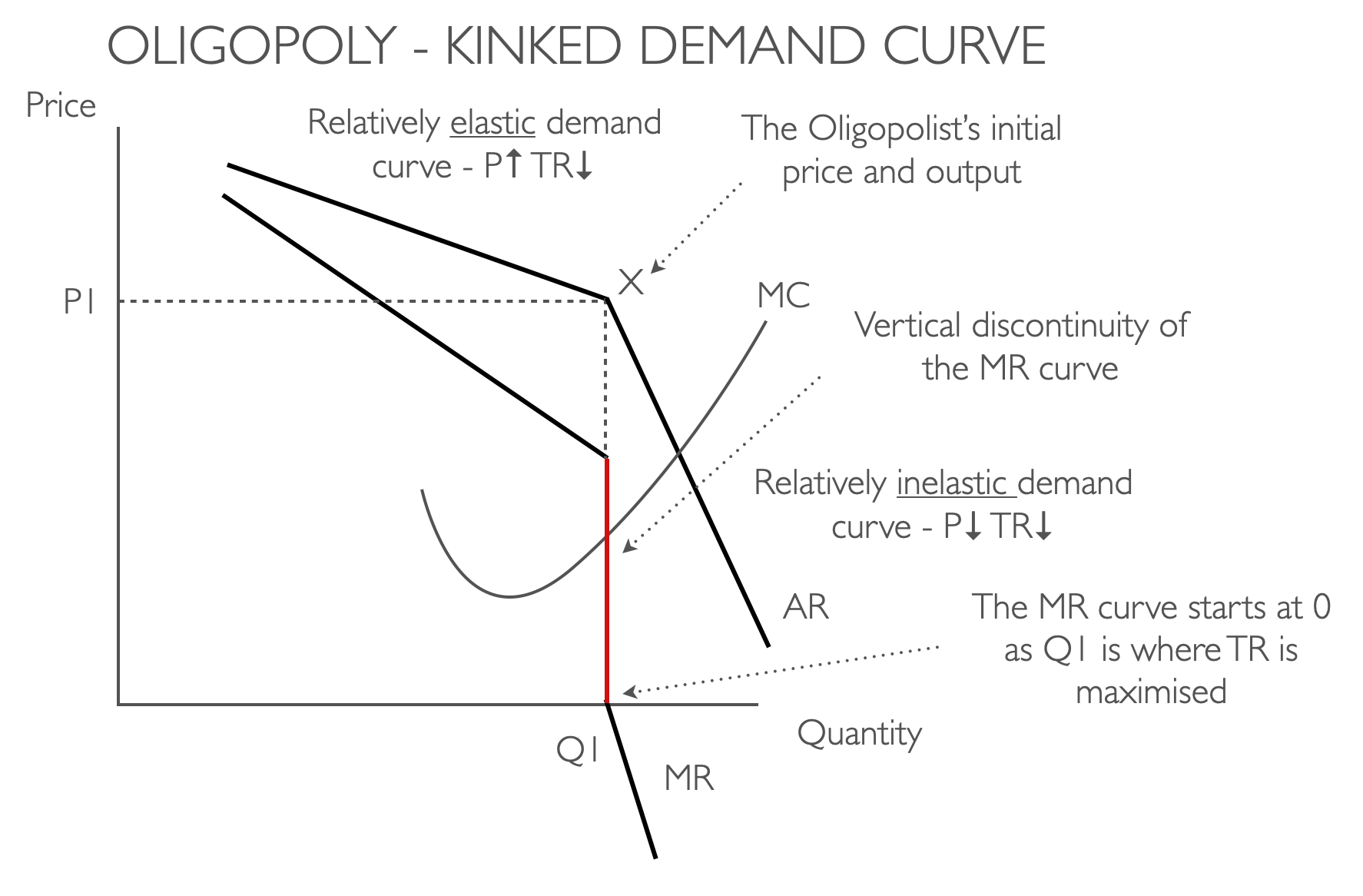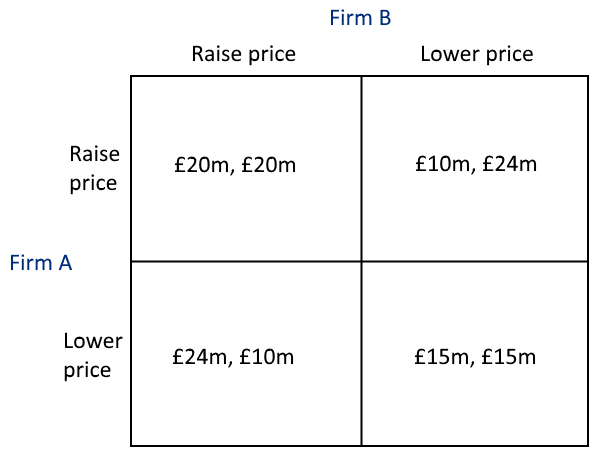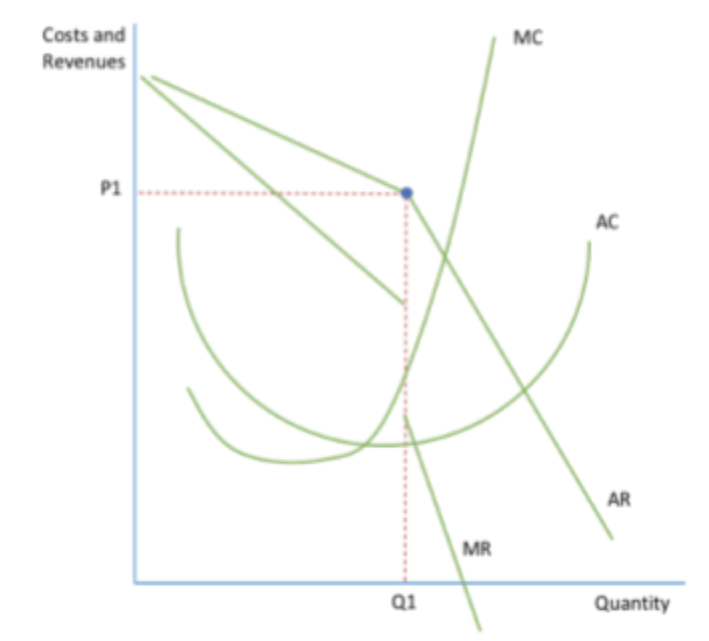Monopolistic competition and oligopolies (3.4.2, 3.4.4)
1/16
There's no tags or description
Looks like no tags are added yet.
Name | Mastery | Learn | Test | Matching | Spaced |
|---|
No study sessions yet.
17 Terms
What are the conditions for monopolistic competition?
1) There must be a large number of small buyers and sellers
2) There are no/low barriers to entry/exit
3) Firms sell differentiated goods
What does a monopolistic competition diagram look like?

In the short run, firms may be able to make supernormal profit. However, as there are no barriers to entry, new sellers will enter the market and therefore will lead to normal profit being made in the long run.
What is the efficiency of firms in monopolistic competition?
In the short run, these firms don’t produce at AC=MC or AR=MC, and so are not productively or allocatively efficient.
In the long run, these firms make normal profits, and therefore are unable to invest sufficiently into R&D, therefore meaning they aren’t dynamically efficient.
What are the characteristics of an oligopolistic market?
1) Dominated by a few large sellers (Still can potentially have many small sellers)
2) High barriers to entry and exit
3) Differentiated goods
4) Interdependence - one firms actions will directly affect another firm
What are the 2 types of oligopolies?
1) Competitive oligopolies - When firms act independently and engage in price or non-price competition to increase market share and revenue
2) When firms cooperate, either overtly or tacitly, to reduce competition in the market
What are the 2 diagrams that can be used to explain non-competitive oligopoly behaviour?
Kinked demand curve and the payoff matrix
What is the kinked demand curve?

The kinked demand curve shows that firms won’t want to change their price from P1, as it would decrease their revenue.
Firms also don’t need to change their price level. Due to the kink in demand, MC is vertical at one point. Therefore, if there are any changes within costs, within this line, then they won’t need to change their price to be at the profit maximising point.
What does the kinked demand curve show?
The kinked demand curve shows reason for price rigidity - why price tends to stay in one place. For oligopolies, this is because they want to maximise profits at that point and, even if there is a change in costs, they won’t need to change their prices from that point. Therefore, the price tends to stay around that point.
What is a price war?
When firms repeatedly cut their prices lower than their competitors to increase their revenue.
What is the payoff matrix?

What does the payoff matrix show (refer to the game theory diagram)?
The payoff matrix shows why firms would want to keep prices high. If both firms follow the dominant strategy (the optimal move), then it would lead to a Nash equilibrium with both firms earning £15m. However, this is lower than their original price of £20m. Therefore, firms would want to avoid a price war and stay at the high price to maximise revenue.
What is overt collusion?
When 2 or more firms secretly and formally agree to limit competition, such as through fixing their prices. These firms are known as a cartel.
Why would firms not want to cut prices whilst colluding?
This is because the other firm could whistleblow, leading to heavy fines for firm A whilst granting immunity for firm B.
What is tacit collusion?
When there is an unspoken agreement between firms to limit competition. Price leadership, which is were firms follow the prices set be the most dominant firm in the market, is an example.
What are the types of price competition?
1) Price wars - When firms try to undercut each other to steal consumers from competing firms
2) Predatory pricing - When firms aggressively drop prices to below their short run shut down point (AVC=AR) to force competitors, usually newer entrants, out of the market and increase their market share.
3) Limit pricing - When incumbent firms set a price low enough, using their economies of scale, to stop smaller, newer firms from entering the market.
What are the types of non-price competition?
Advertising - Creates an awareness of the company and can persuade consumers to purchase their product.
Branding - A successful and strong branding can help to improve loyalty and constant consumer purchases
Loyalty cards- Can incentivise consumers to continue purchasing goods, and can also provide info on consumer spending so a firm can adapt their strategies
Quality - A firm with higher quality products can charge higher prices, be seen as more reliable and have higher brand loyalty
How efficient are oligopolies?

As they produce at the profit maximisation point, and not at AC=MC or AR=MC, they are not productively or allocatively efficient.
However, they are likely to be dynamically efficient. They make supernormal profits, and are more incentivised to compete for market share, so are likely to invest in R&D